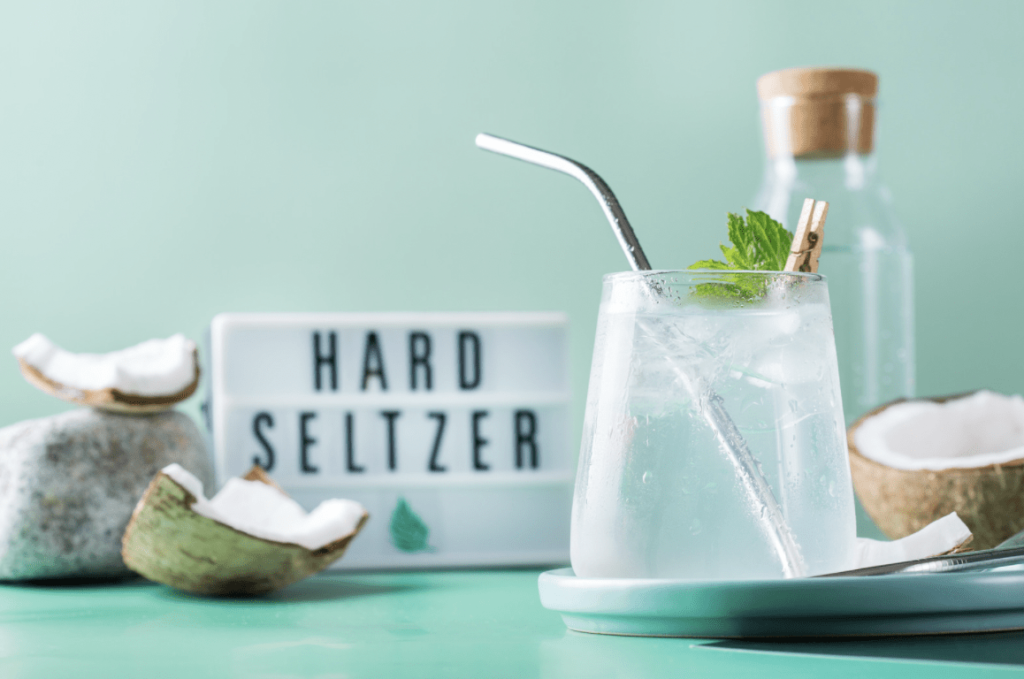If 2020 taught us anything, it’s that alcohol is important. Many of the habits that were created that year will continue to trend in the future. There were two major alcohol trends that cropped up in 2020 that you’ll want to notice: Online purchases and hard seltzer. Are they still trending?
Alcohol Trends
Selling alcohol online
Just like ordering Chinese take-out and having it delivered to your doorstep, apps like Drizly (an alcohol delivery app that merged with Uber Eats in January 2024), Thirstie (an e-commerce platform for alcohol), and even Uber Eats make it easier to do the same thing with alcoholic beverages. Whether you purchase from a package store or a dining app, ordering adult beverages online is easy and convenient. In fact, of consumers who say they ordered alcoholic beverages for delivery for the first time during COVID-19 restrictions, nearly 70% say they will continue ordering them in the future.
Recent numbers pertaining to the popularity of online sales of alcoholic beverages are not yet available, but back in 2017, online alcohol sales reached $1.7 billion, per Grocery Dive. E-commerce alcohol sales are predicted to grow by 34% between 2021-2026, with a 43% increase in 2020.
This trend will unquestionably rely on modifying liquor laws across the country. Overall, delivery and curbside pickup will only continue to grow as options. Expect to see delivery-friendly beverages like canned wines and bottled cocktails from manufacturers.
RTD Cocktails
Ready-to-drink cocktails are another one of those alcohol trends that was born from COVID-19.
Hard seltzer was the fastest-growing option on menus in 2020. New brands and flavors are popping up all the time. Predictions say it will hit 7% of drink menus next year, as opposed to less than 1% of menus only three years prior. If you don’t have hard seltzer on the menu already, consider it – it’ll probably increase your alcohol profits. Coca-Cola launched Topo Chico hard seltzer in 2020. It’s Coca-Cola’s first alcoholic beverage in the US since 1980.
In 2024, the ready-to-drink (RTD) cocktail market is all the rave. Data from Nielsen shows that sales of canned cocktails grew 126% in one year (think White Claw and Cutwater). Experts say the RTD cocktail market, valued at $782 million in 2021, will surge through 2030. According to BevAlc Insights, 34% of survey participants (up from 32% last year) said they plan to buy RTD cocktails in the coming year, and the majority plan to try new brands in 2024.
Other Alcohol Trends
- Mocktails And Low-Alcohol Beverages: Studies show people are drinking less. According to research by Nielsen, the growing “sober curious” movement is primarily driven by younger people seeking healthier alternatives to traditional drinks.
- Gen Z Comes of Drinking Age: According to a Pew Research Center report, Gen Z (born between 1997 and 2012) is the most diverse population to date, with the potential to be the highest educated. According to a 2023 ICSC report, Gen Z’s progressive ethos has already begun to impact the industry, with 47% wanting to support brands that address racial and gender equality and sustainability.
- Coffee as a Cocktail Ingredient: Coffee offers a point of relatability for consumers and a functional burst of caffeine. As a result, drinks experts anticipate that other coffee cocktails will take over from the Espresso Martini. Interest in the search term ‘Carajillo’ has doubled in the past year, according to Google Trends, with some people already predicting that it might be the ‘it’ drink of 2024.
Get Trendy
Consumers will likely always seek out new experiences, especially those of convenience. By adapting to these trends, using technology wisely, and prioritizing consumer needs, bars and restaurants can successfully manage changes and secure their success in 2024 and beyond.
Exploring The Latest Trend Of Plant-Based Cuisine In Restaurants
By Leslie Radford
**Updated May 2024

